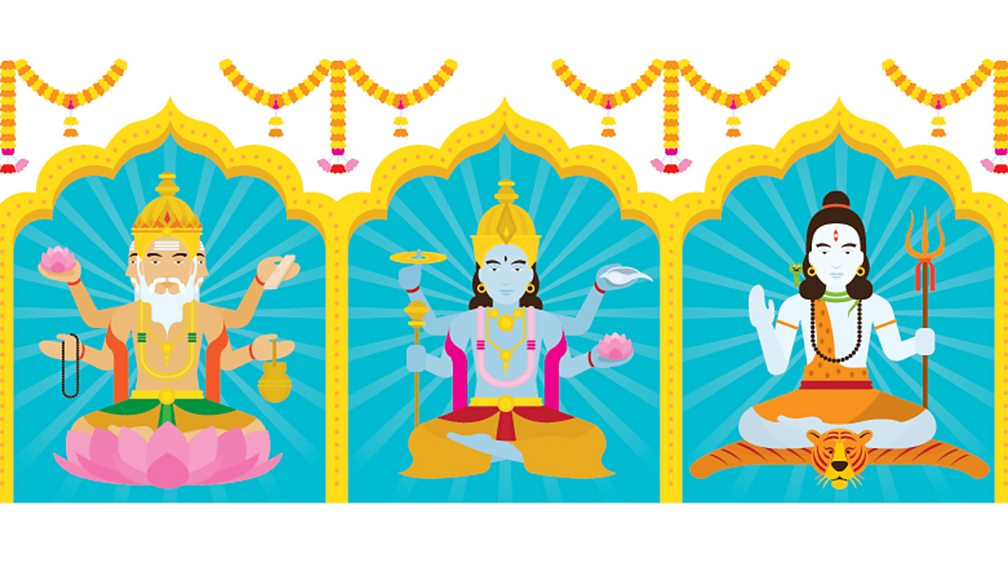Trimurti is a term that is often used to refer to the triad of gods in Hinduism, Brahma, Vishnu, and Shiva. These three deities are considered to be the highest gods in Hinduism and represent the cyclical nature of the universe. In this article, we will explore some of the frequently asked questions about Trimurti and gain a deeper understanding of this important concept in Hinduism.
What is Trimurti in Hinduism?
Trimurti is a Sanskrit term that means "three forms" and refers to the three highest gods in Hinduism, Brahma, Vishnu, and Shiva. These three gods are believed to represent the three fundamental forces that govern the universe: creation, preservation, and destruction.
What is the significance of Trimurti in Hinduism?
The concept of Trimurti is significant because it represents the cyclical nature of the universe. Hinduism teaches that the universe goes through cycles of creation, preservation, and destruction, and the Trimurti is believed to be the embodiment of these forces. By understanding the roles of Brahma, Vishnu, and Shiva, we can gain a deeper appreciation for the Hindu worldview and its beliefs about creation, preservation, and destruction.
What are the roles of Brahma, Vishnu, and Shiva in Hinduism?
Brahma is the creator of Hinduism, and he is responsible for creating the universe and all living beings. He is often depicted with four heads and four arms, representing the four Vedas, which are the sacred texts of Hinduism. Vishnu is the preserver, and he is responsible for maintaining the universe and ensuring that it does not fall into chaos. He is often depicted with four arms holding various objects, such as a lotus flower, a conch shell, and a discus. Shiva is the destroyer, and he is responsible for bringing an end to the universe and preparing it for a new cycle of creation. He is often depicted with a third eye and a crescent moon on his forehead, symbolizing his wisdom and insight.
How is Trimurti depicted in Hindu art?
Trimurti is often depicted in Hindu art as a three-headed figure with each head representing one of the three gods. The three heads symbolize the three fundamental forces of creation, preservation, and destruction. Brahma is usually depicted with four heads and four arms, Vishnu with four arms holding various objects, and Shiva with a third eye and a crescent moon on his forehead. In some depictions, the three gods are shown standing together or seated on a lotus.
What is the symbolism of the three heads of Trimurti?
The three heads of Trimurti represent the three fundamental forces of creation, preservation, and destruction. Brahma's four heads represent the four Vedas, which are the sacred texts of Hinduism. Vishnu's four arms represent his ability to act in the world, while Shiva's third eye represents his wisdom and insight. The three heads of Trimurti symbolize the unity of these forces and the importance of balance and harmony in the universe.
Why is Trimurti important in Hinduism?
Trimurti is an important concept in Hinduism because it represents the cyclical nature of the universe and the interdependence of the three fundamental forces of creation, preservation, and destruction. Understanding the roles of Brahma, Vishnu, and Shiva can help us gain a deeper appreciation for the Hindu worldview and its beliefs about the nature of existence.
In conclusion, Trimurti is an important concept in Hinduism that represents the cyclical nature of the universe and the three fundamental forces of creation, preservation, and destruction. By understanding the roles of Brahma, Vishnu, and Shiva, we can gain a deeper appreciation for the Hindu worldview and its beliefs about the nature of reality.
The concept of Trimurti has had a significant impact on Hindu culture, art, and literature. The three deities are often depicted together in various forms of artwork, such as sculptures, paintings, and murals. The Trimurti symbolizes the unity and interconnectedness of the universe and serves as a reminder of the Hindu belief in the ultimate reality of the universe, Brahman.
Furthermore, the Trimurti is not limited to just Hinduism. The concept of three fundamental forces of creation, preservation, and destruction can be found in many other religions and cultures. For example, in Christianity, there is the concept of the Holy Trinity, which consists of God the Father, God the Son, and God the Holy Spirit. In ancient Egyptian mythology, there were three main gods: Osiris, Isis, and Horus.
In conclusion, the Trimurti is an integral part of Hinduism and represents the cyclical nature of the universe and the three fundamental forces of creation, preservation, and destruction. Understanding the roles of Brahma, Vishnu, and Shiva can help us gain a deeper appreciation for the Hindu worldview and its beliefs about the nature of reality. The Trimurti serves as a reminder of the unity and interconnectedness of the universe and can be found in various forms of art and literature. Its influence can also be seen in other religions and cultures around the world.


0 Comments